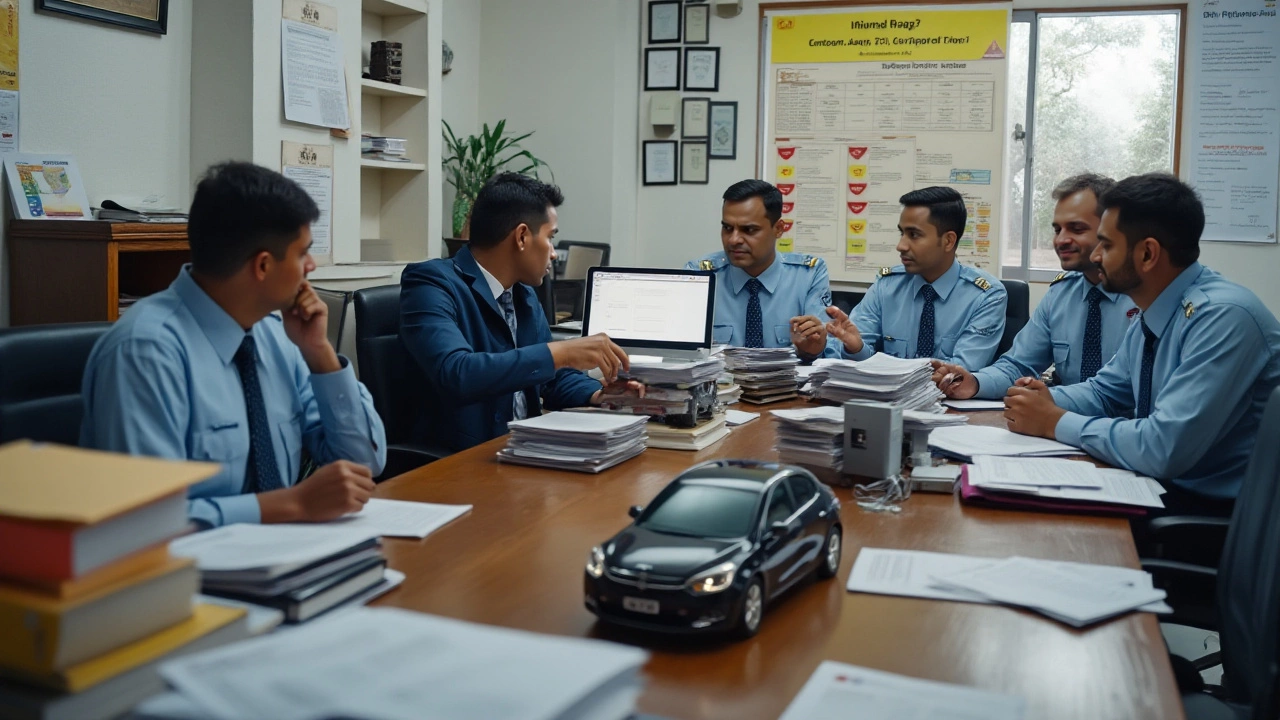
Shipping a car across continents sounds like a daunting task, particularly from the USA to India, but with the right information, it becomes a manageable venture. The total cost and effort involved in this extensive process are influenced by multiple factors, including shipping fees, import duties, legal compliance, and more.
To begin with, understanding the basic shipping costs is crucial. The charges vary based on the vehicle's size, the shipping method, and additional services required. Although it might appear straightforward initially, unforeseen expenses can arise, making a detailed breakdown essential.
Import duties and taxes significantly affect the total cost. India imposes various duties on imported cars, which are calculated based on the car's specifications and value. Being aware of these duties helps in financial planning and avoiding sticker shock upon the car's arrival.
Navigating the legal landscape is another important consideration. Importing a vehicle involves compliance with numerous regulations, including emission and safety standards. Ensuring that the car meets these benchmarks is pivotal to avoid legal complications.
Finally, selecting the right shipping method and service provider can make a substantial difference. Evaluating the options and choosing a reputable company will ensure the safety of your vehicle during its long journey.
- Understanding Shipping Costs
- Import Duties and Taxes
- Legal and Compliance Issues
- Choosing the Right Shipping Method
Understanding Shipping Costs
When you first decide to transport a vehicle from the USA to India, the intricacies of car shipping cost calculations might seem complex. The expenses involved go beyond simple freight charges. The charges can be broadly divided into several categories such as base transport costs, insurance, and ancillary charges. Understanding these will help manage expectations and budget accordingly. Shipping companies provide quotes that typically include basic transportation and fees, but additional costs can sneak in accustomed to the specific service chosen. Often, the type of transportation—whether it’s by container or roll-on/roll-off (RoRo)—can influence the initial pricing significantly.
Container shipping, although generally more expensive than RoRo, offers added security as your vehicle is encased for its journey. This method is apt for luxury or classic cars that require extra protection from elements. The choice also depends on the destination port's infrastructure in India and personal convenience, which could add to logistical complexity and costs. To throw some light on pricing, let's consider that the median shipping cost using a container is approximately between $3,000 and $5,000, depending on the car size and destination within India. On the contrary, RoRo might range from $1,200 to $3,000. Choosing a feasible option invariably requires a balance between cost and the level of care and security needed.
Insurance for the journey is another notable expense. Most shipping companies recommend full coverage insurance, which covers potential damages during transit. This is highly advisable since the voyage is long and risks are inherent. The cost here is often a percentage of the car’s declared value. Generally, it can range from 1% to 5% of the vehicle’s worth, offering peace of mind against mishaps. On this note, securing comprehensive insurance not only avoids disputes in unfortunate events but ensures the protection of your investment.
In addition to these, there are destination charges that should not be overlooked. Many Indian ports levy handling fees, and customs clearance can introduce extra charges. Engaging with reliable agents who are well-versed in dealing with Indian ports can navigate these waters and often optimize the clearing process efficiently. A less discussed, yet significantly influential factor is the currency exchange rate. Since quotes are usually given in US dollars, understanding existing foreign exchange trends can also impact the final cost numerically. A seasoned shipper once mentioned,
“Always account for the unpredictable swings in exchange rates—they can subtly upend a well-planned budget.”Indeed, monitoring forex trends is a prudent practice for any international venture.
Lastly, there are additional services that one might consider. These can include door-to-door services, which often appear convenient but come at a premium. Calculating such costs involves knowing exactly what services are included in the transportation package and what additional charges could be incurred for personalized services. Every shipping scenario is unique and can include specific needs, such as timing, route, or terminal preferences. Thoughtful deliberation here will avert surprises later on. It’s advisable to have a clear conversation with the chosen service provider regarding every aspect of the trip from origination to destination.

Import Duties and Taxes
When considering the journey of shipping a vehicle across the vast stretch from the USA to India, it's crucial to delve into the realm of import duties and taxes. Despite the plethora of costs involved in this process, import duties arguably form one of the most significant expenses, which often catches many by surprise. Understanding these financial obligations can be the difference between a smooth transition and a budget-busting blunder.
India’s tax regime on imported vehicles is multifaceted, involving several layers. The principal component is the basic customs duty, which is calculated based on the vehicle’s cost, insurance, and freight (CIF) value. The percentage applied here can be staggeringly high for luxury cars, sometimes reaching astronomical figures. On top of this, importers must contend with additional levies such as the Integrated Goods and Services Tax (IGST), Compensation Cess, and, occasionally, special additional duty. Each of these is imposed with distinct percentages, compounding the vehicle's overall cost substantially.
To illustrate, a standard mid-sized vehicle might incur different rates compared to luxury models. For instance, while importing a vehicle under 1500cc engine capacity might attract a 60% basic duty, a larger or more luxurious vehicle could face an incredibly steep 100% duty or more. Subsequently, the IGST and compensation cess are levied on the total of the CIF value plus customs duty, creating a cascading effect that further inflates the cost, potentially doubling or even tripling the vehicle's original price.
It's imperative to strategize savings by utilizing any concessions. Diplomatic exemptions or organizations with government ties sometimes allow for reduced duties. Additionally, keeping abreast of bilateral agreements or upcoming changes to tariffs through official channels can offer financial respite. According to a report by the Ministry of Commerce, a proposed Motor Vehicles Agreement between India and the USA might streamline this process for environmentally friendly vehicles, reducing duties to encourage eco-friendly imports.
"Navigating the complexities of import duties in India requires both patience and diligence. Being well-prepared can significantly reduce fiscal shock," says Rajesh Kumar, a logistics expert specializing in international vehicle importation.
In order to avoid pitfalls, potential importers are advised to reach out to customs brokers and seek consultancy from tax experts who can provide personalized advice tailored to the specific vehicle and circumstances. Given how intricate and potentially volatile the international trade policies can be, professional guidance ensures adherence to local regulations, while also potentially unlocking avenues for savings.

Legal and Compliance Issues
When bringing a car from the USA to India, legal and compliance issues take center stage. It's not just about getting the vehicle across the ocean, but ensuring all legalities are meticulously observed to avoid complications. Every country has a unique set of rules governing the importation of vehicles, aimed at ensuring environmental standards, safety regulations, and trade policies are adhered to. In India, these regulations can be stringent and include emissions standards, which have become increasingly rigorous following global environmental commitments.
The first aspect to consider is the emission norms. India has implemented the Bharat Stage VI (BS-VI) regulations, which are set to match the European emission standards. Any car imported must comply with these standards, a factor that can limit the types of vehicles eligible for import. Ensuring compliance might mean modifications to the car's engine or exhaust system, which can increase costs significantly. Beyond emissions, safety standards are equally critical. Vehicles must pass crash tests pertinent to Indian roads, emphasizing features like airbags, anti-lock braking systems, and electronic stability control.
Documentation forms another crucial pillar of legal compliance. A plethora of documents is required, including a bill of lading, packing list, invoice, insurance papers, and a customs declaration form. Failure to provide any of these can result in delays or fines. Moreover, the car owner must obtain a 'No Objection Certificate' from the Indian Ministry of Commerce and Industry, confirming that the vehicle meets all import requirements. It may also be necessary to prove ownership and acquire a valid registration certificate within a stipulated time frame post-arrival.
According to an article by the Economic Times, "Bringing vehicles into India is not just about the mechanical conditions but intricacies of regulatory compliance which challenge the most experienced of importers."Keeping abreast of legal updates is crucial. Legislative revisions can occur without prior notice, impacting import processes. Car importers are advised to liaise with legal experts and consulting agencies to remain throughout updated on specific tariffs, local laws, and procedural modifications. Legal advice often prevents missteps and ensures a smoother transition.
In some cases, significant import duties can be waived under certain conditions, such as if the vehicle is categorized under specific government incentives or if the owner is an expatriate returning after an extended period. This can be a cost-saving advantage and highlights the importance of understanding every legal facet involved. Sometimes reciprocal agreements and trade deals between countries can also influence import laws, either easing or tightening regulations. This complexity underlines the importance of detailed research and professional consultations before proceeding with such a venture.

Choosing the Right Shipping Method
When transporting a vehicle from the USA to India, selecting the shipping method that best suits your needs is essential to ensure a smooth transit. The primary methods are container shipping, Roll-on/Roll-off (RoRo), and air freight. Each option has its advantages and drawbacks, which must be carefully considered in relation to cost, time, and security. Container shipping involves placing your car in a dedicated container, which adds a layer of protection against weather and damage. This method is particularly beneficial if you plan to move additional personal items alongside your vehicle. On the other hand, Roll-on/Roll-off shipping is typically more cost-effective. Cars are driven onto the vessel and secured below the deck, allowing for larger capacity transport. However, this method may expose your vehicle to environmental conditions and is not always available for all port destinations.
Air freight is the fastest option, albeit the most expensive. This is ideal when time constraints are a significant factor and budget is less of a concern. While air freight ensures quick delivery, it's employed less frequently due to the high cost relative to other methods. According to a shipping expert, "Air freight is like taking a first-class seat for your car. You pay a high premium, but it’s all about speed and prioritization."
In terms of securing quality service, researching and selecting a reputable shipping company is crucial. Not all companies offer the same level of service or reliability, and customer reviews can provide insight into their performance. It’s advisable to solicit quotes from several providers and compare not only the costs but included services such as insurance coverage, tracking options, and handling procedures. An informed decision here can mitigate risks and potential additional costs.
To aid in your decision-making, the following table provides a simplified comparison of these options:
| Method | Cost | Speed | Security |
|---|---|---|---|
| Container Shipping | Moderate | Medium | High |
| RoRo Shipping | Low | Medium | Moderate |
| Air Freight | High | Fast | High |
Ultimately, the choice of shipping method is critical to the successful relocation of your vehicle. Consider the import regulations at the destination as these can dictate the most appropriate shipping method. Taking the time to choose wisely will lead to fewer headaches and ensure that your car arrives safely and timely at its new home in India.




